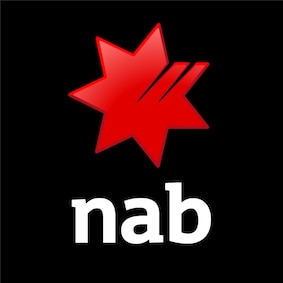Starting a business? Use our start-up costs calculator - NAB
Coming up with an idea for a new business is a great moment. The next step is to work out its financial feasibility, if it will make money. Our start-up costs calculator will help you work out if your idea will be a profitable one.
What does the start-up costs calculator do?
Many businesses fail to work out if their business idea can turn a profit – a mistake easily remedied with our simple start-up costs calculator (XLS, 105KB). This tool addresses two key financial areas that must be examined in order to make the smartest business decision. They are:
- costs
- revenue potential.
Tallying costs
All start-ups have start-up costs, followed by running costs. Your initial costs include expenses associated with starting your business such as:
- equipment and assets – such as vehicles and furniture
- office equipment – such as computers, telephone systems, copiers, and water coolers
- one-time costs – such as franchise fees, rent deposit, initial lease payments, legal fees, and initial stock.
While these costs won’t necessarily repeat in the near future, your business will incur other operational costs on an ongoing basis. Your running costs are those that you’ll incur regardless of whether you make a sale or not. Examples of running costs include:
- rent
- insurance
- advertising
- utilities
- phone and Internet services
- salary and payments to subcontractors
- postage
- loan repayments.
The start-up costs calculator prompts you to enter both start-up (or capital) costs and your monthly running costs. However, costs are just half of the equation. In order to determine if your business idea makes financial sense, you’ll need to work out its revenue potential.
Determining revenue potential
The start-up costs calculator helps you consider your business idea’s revenue potential by estimating the following:
- Maximum number of potential customers you expect per day – be realistic. If you’re opening an intimate fine dining establishment with just five tables, it’s unlikely you’ll serve 500 customers per day.
- Number of days you’ll be open each year – if you plan to be closed on holidays and weekends, make sure you subtract those days from the year.
- Percentage of customers who make a purchase – conduct research to uncover average conversion rates for your industry.
- Average sale per customer – this will depend on your market and your product or service. Do your research to see what the market will accept.
- Average cost per customer (if applicable) – how much does it cost to produce your product or service? In some cases, particularly with service businesses, you may not have any per customer costs. If so, skip this field.
Once you’ve entered your estimated costs and revenue figures, our start-up costs calculator presents you with a summary. This summary details how much money you need to get started and how much you’ll need to run your business on a monthly basis. It also determines how much revenue your idea could generate after annual expenses.
Why use the start-up costs calculator?
The start-up costs calculator can save you a great deal of money and heartache if your business idea lacks revenue potential.
However, the start-up costs calculator can also provide you with the confidence you need to move forward if your idea has promising revenue potential. It will also help you make your case should you seek a business loan or a relationship with private investors.
How to use the start-up costs calculator
Our start-up costs calculator is a multi-tabbed Microsoft Excel spreadsheet.
Step 1
Download our start-up costs calculator (XLS, 105KB) and open it with Microsoft Excel or similar.
Step 2
Read the Intro tab and then open the Capital Costs tab.
Step 3
Enter your initial capital costs in the Capital Costs tab. This includes equipment and assets (and their expected lifespans) as well as other one-off costs such as initial stock, licence and franchising fees, and letterhead.
Step 4
Enter your monthly fixed costs in the Monthly Costs tab. These are the costs your business will incur regardless of sales – such as rent, utilities, and loan repayments.
Step 5
Enter customer data in the Revenue Calculator tab. You’ll be prompted to enter data related to customers, days of operation, conversion rate, and average sale or cost per customer.
The calculator determines your business idea’s revenue potential based on these figures along with information found in the Capital Costs and Monthly Costs tabs.
Step 6
Click the Summary tab and fill in your name, concept, and description. This printable page automatically summarises your start-up’s capital costs, monthly costs, and potential revenue.
Step 7
Review your summary to determine if your business idea has an acceptable level of revenue potential to move forward.
Use our start-up costs calculator to help you decide if your business idea will be profitable.
Other business moments
Checklist for the first steps in starting a business
Tips, links and calculators to cover the basics.
Business plan template
Use our template to guide you through writing your business plan.
Business planning
From a SWOT template to a financial health check, these tools, tips and calculators will help you manage your business.
Related products and services
Loans and finance
Starting a business or looking to expand? Our range of business loans, overdrafts, equipment and trade finance options can help you achieve your goals.
Business calculators
NAB has a range of business calculators and tools, along with a national network of business bankers to help you.
Business car and equipment finance
Find the right finance solution for your vehicle and equipment needs.
Get in touch
Request a call back
Let us help with your business banking needs. Request a call back to chat with one of our business bankers.
Contact us
Explore our business banking contact information and get support with a wide range of products, services and topics.
Visit a NAB branch
Our business bankers are located all around Australia.
Important information
Apologies but the Important Information section you are trying to view is not displaying properly at the moment. Please refresh the page or try again later.
The information contained in this article is intended to be of a general nature only. It has been prepared without taking into account any person’s objectives, financial situation or needs. Before acting on this information, NAB recommends that you consider whether it is appropriate for your circumstances. NAB recommends that you seek independent legal, financial and taxation advice before acting on any information in this article.





